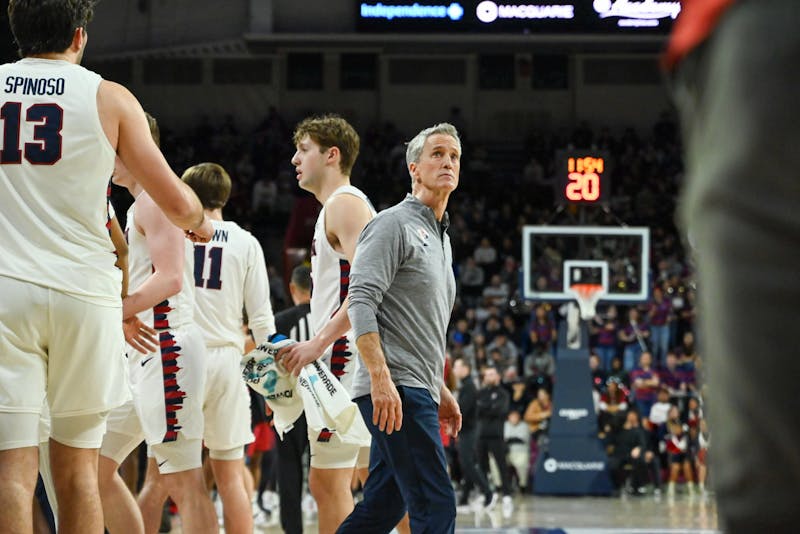The journey to the NCAA Tournament is finally complete. Now, it’s time to Dance.
Penn’s victories this weekend showcased some of the best this team has to offer: great ball movement on offense and stingy defense that forces teams to make tough shots and Michelle Nwokedi dominating on both sides of the ball. But even still, there are plenty of questions left for this team as they approach the NCAA Tournament.
Can they keep opponents off the offensive glass?
For starters, in both games, the Quakers let up far too many offensive boards. Penn gave up 14 against Brown in the semifinal and 18 against Princeton in the final, leading to a total of 37 combined second-chance points. On Sunday, those second-chance buckets helped keep Princeton in the game with both extra points and boosts in morale.
Penn might be able to get away with that when teams have shooting percentages in the low 30s or high 20s, but against some of the top teams in the nation, the Quakers cannot afford to give up more scoring chances. If the Red and Blue are to have any shot at an upset next weekend, they need to box out and limit offensive rebounds.
Can they speed up their pace of play?
On the other side of the ball, one of Penn’s biggest struggles was length of possessions. The team’s average time of possession for the Princeton game was 20 seconds, and they committed several turnovers on shot clock violations. Moreover, Penn was often forced into taking low quality shots as the shot clock expired.
The Quakers had too many possessions that they wasted by taking too long. Some of it was due to good defense, some of it was due to not finding open looks, but a lot of it was due to Penn not doing enough to create opportunities for shots.
Against superior teams, Penn must make each possession count if they want to pull off an upset. They’re going to need to find ways to create more movement and shots earlier on in their possessions to avoid those tough shots at the buzzer.
Can they get hot and stay hot from beyond the arc?

Which Penn will we see from three-point range next weekend? The one that shot a lowly 18% in the first half against Princeton, or the one that shot a much more respectable 43% in the second half? The answer might just decide the Quakers’ fate in the tournament.
For an offense that has been so reliant as of late on Ivy Player of the Year Michelle Nwokedi, any help from the outside really opens up space on the floor. We saw that this weekend with the big run in the third quarter against Brown, where threes from Nwokedi, Anna Ross and Beth Brzozowski led to more production from Nwokedi and Sydney Stipanovich.
When the Red and Blue are making shots from downtown, their offense can be lethal. A few makes from the players on the wing can make opposing defenses’ respect the shooters and open up driving lanes down low for Penn’s bigs. But if the Quakers go cold, defenses can converge into the middle without the fear of a trey, and their upset chances might disappear.
How much will coach Mike McLaughlin utilize his bench?
Penn had a fairly big rotation through most of the season, with eight or nine players consistently getting minutes. But in both Ivy Tournament games, only sophomores Princess Aghayere and Ashley Russell got the calls from the bench. Lack of depth has played a role in previous tournament appearances for the Quakers, as they started strong and faded towards the end. Penn certainly has quality options from the bench, so if the team starts to tire, he can feel comfortable going to some of them. The question will be how much he chooses to rely on them.
The Daily Pennsylvanian is an independent, student-run newspaper. Please consider making a donation to support the coverage that shapes the University. Your generosity ensures a future of strong journalism at Penn.
Donate







